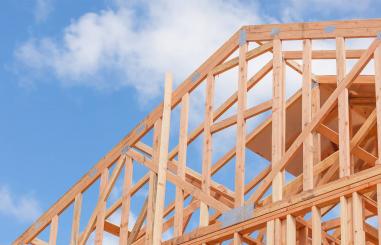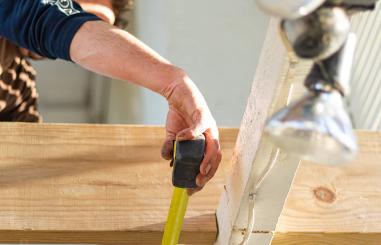When clients picture the construction process, they often imagine a clear sequence: design, approvals, build, handover. In reality, every project must navigate a complex ecosystem where weather, material supply chains, and approvals all play a major role in determining how fast (or slow) a build can progress.
At Prescom Constructions, we believe the best builds happen when clients understand these factors upfront. Let’s break down the real-world influences on construction timelines—and why an experienced building team makes all the difference.
Australia’s climate is infamous for its variability. Even in “normal” years, rainfall cycles, heatwaves, and seasonal storms can dramatically influence progress on-site. The impact isn’t just about whether workers can show up—it affects the very materials and processes used in construction.
How Weather Impacts Timelines
Heavy rain delays groundworks, slab pours, waterproofing, roofing, external cladding and more.
Heatwaves force shorter working days for safety, especially during concrete curing or roofing with metal sheets.
Wind and storms halt crane operations, lifting, scaffolding adjustments, and high-level work.
Cold weather affects curing times for concrete and adhesives.
Why Clients Should Care
Weather disruptions can accumulate quickly. One wet week on-site often leads to a cascade: subbies get re-sequenced, deliveries get moved, inspections shift, and everything must be re-coordinated. A quality builder plans for this with buffer allowance—but no one can control the climate.
The last few years have proven how sensitive construction timelines are to global supply chains. Timber shortages, steel price fluctuations, and logistics delays have all hit the industry—and while things have improved, supply chains remain more fragile than many realise.
Common Supply Chain Delays
Imported fixtures and fittings (tiles, tapware, stone, specialist lighting) may face weeks or months of lead time.
Structural materials, even locally sourced, can be delayed during high-demand periods.
Custom products (joinery, windows, engineered timber) rely on both manufacturing and freight efficiency.
Transport bottlenecks, from port delays to regional freight constraints, add unpredictability.
How Builders Manage This
Prescom Constructions works closely with suppliers to lock in materials early, recommend reliable alternatives when needed, and sequence works to minimise idle time. But it’s important for clients to understand: material delays are often industry-wide, not builder-specific.
Approvals are often the quietest but longest part of the construction process. DA approvals, building permits, engineering, energy assessments, subdivision requirements, and compliance checks vary drastically depending on the project, location, and council.
Why Approvals Slow Down Builds
Councils face major backlogs and staffing shortages.
Each approval stage has strict review cycles that cannot be rushed.
Any small clarification or redesign request resets the process.
Variations made after submission often cause extra delays.
Compliance requirements (bushfire ratings, heritage overlays, flood zones) add complexity.
What Clients Often Don’t Realise
Approval time is not construction time. It’s an entirely separate phase—and often the longest one. Even perfectly prepared plans can take months to progress through local authorities.
The Real Art of Construction: Coordination
While these factors—weather, supply chains, and approvals—aren’t controllable, an experienced builder can control how well they respond to them. This is where Prescom Constructions excels.
We focus on:
Smart scheduling with built-in contingencies
Regular communication with clients and contractors
Early procurement of long lead-time items
Scenario planning for weather and supply disruptions
Strong relationships with engineers, certifiers, and suppliers
This reduces delays, sharpens coordination, and keeps builds progressing even when external pressures arise.
What Homeowners Can Do to Help
You can play a role too! Here’s how clients can keep their build moving smoothly:
Make selections early—especially tiles, tapware, and major fixtures.
Respond to clarification requests quickly.
Stick to decisions—late changes often require re-approvals or re-quoting.
Understand that delays don’t always mean inactivity. Sometimes teams are coordinating behind the scenes.
Trust the schedule—a good builder anticipates disruptions you may not see.
Building is a team effort, your builder, your trades, your suppliers, regulators, and yes… even the weather. When everyone understands the factors in play, the experience becomes far smoother and the outcome far better.
At Prescom Constructions, we pride ourselves on navigating the complexities so our clients don’t have to. With transparency, planning, and communication, we turn potential delays into well-managed timelines—and deliver homes built to last.


Prime Costs (PC) and Provisional Sums (PS) are essential terms in construction quotes. Prime Costs cover allowances for materials like fixtures or appliances that haven't been selected yet, offering flexibility but potentially leading to additional costs if more expensive options are chosen. Provisional Sums are estimates for work not fully defined when quoting, like excavation or retaining walls, and may change due to unforeseen circumstances. Understanding the distinction helps homeowners manage budgets and avoid surprises during the building process.
Read more
A pre-handover inspection is crucial when taking possession of a new home to ensure any issues or defects are addressed before the final settlement. Key areas to check include the structural integrity (e.g., walls, floors), fittings and fixtures (e.g., taps, doors, windows), kitchen appliances, bathroom tiles and plumbing, electrical systems, and finishes like paintwork and flooring. By thoroughly inspecting these aspects, homeowners can prevent costly repairs later and ensure a smooth transition into their new home.
Read more
In recent years, a new trend has emerged in the world of residential homes known as the Australian Hamptons style. This unique architectural and interior design style combines elements of traditional Hamptons style with a distinctive Australian twist, resulting in homes that are both elegant and relaxed. Often referred to as Aussie Hamptons, these homes have gained popularity for their timeless appeal and seamless integration with the beachy Australian lifestyle.
Read more